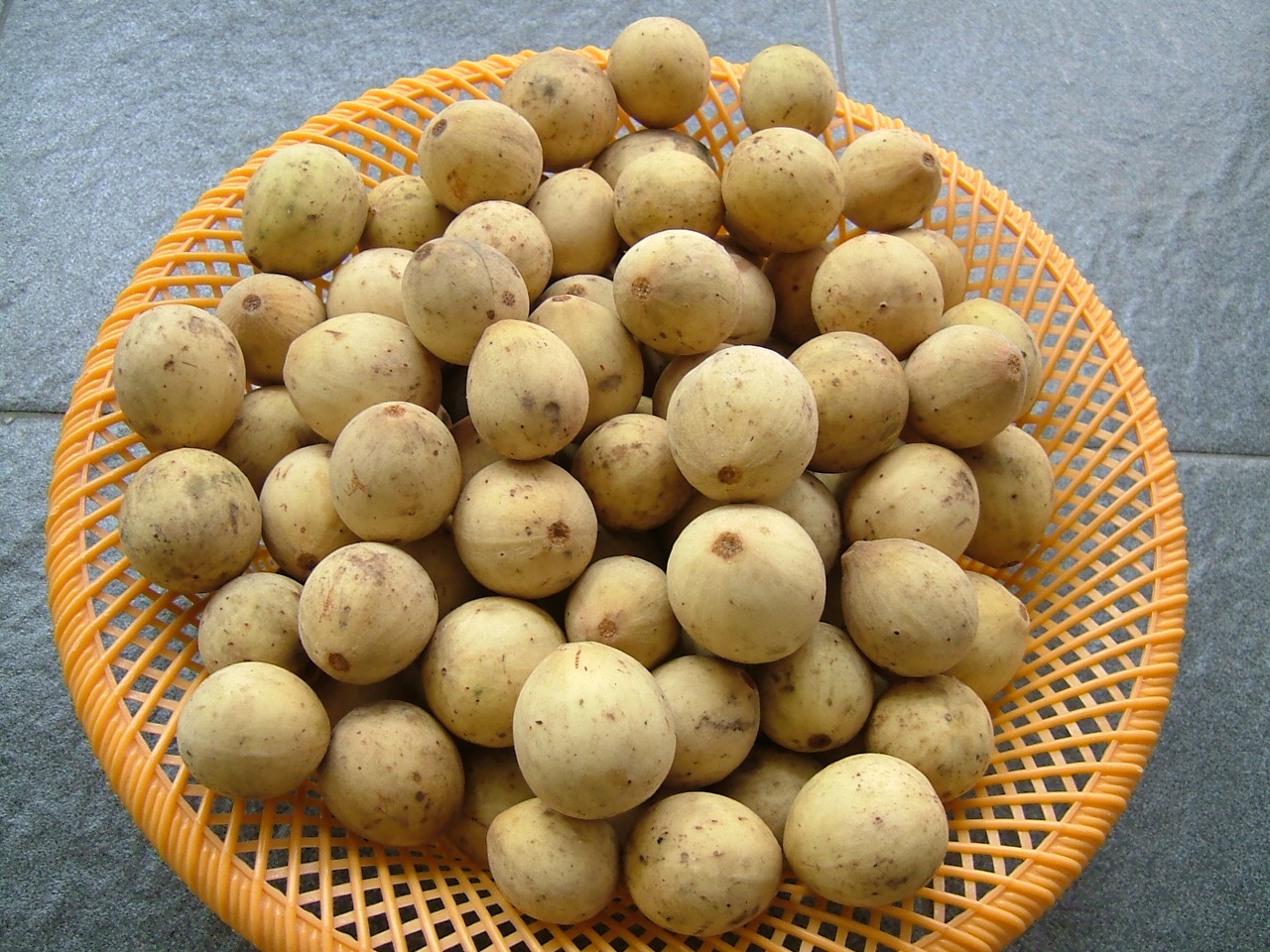Benutzer-Werkzeuge
Lansium domesticum Corrêa - syn.Aglaia domestica (Correa) Pellegr.; Lansium javanicum Roem. - Meliaceae
lansat, ลางสาด (thai), Lansibaum
L.domesticum var Dongon: longon, long kong, ลองกอง (thai), dokong (malai)
L.domesticum var Duku: duku, ดูกู (thai), Dukubaum
http://www.plantnames.unimelb.edu.au/Sorting/Lansium.html
There are several varieties with sweet and sour tasting fruits. http://de.wikipedia.org/wiki/Lansibaum
„The wood is locally used. The bark is bitter and used as medicine against all sorts of illnesses. The fruits are edible.“
http://www.asianplant.net/Meliaceae/Lansium_domesticum.htm
„There are two distinct botanical varieties; var. pubescens, the typical wild langsat which is a rather slender, open tree with hairy branchlets and nearly round, thick-skinned fruits having much milky latex and var. domesticum, called the duku, doekoe, or dookoo, which is a more robust tree, broad-topped and densely foliaged with conspicuously-veined leaflets; the fruits, borne few to a cluster, are oblong-ovoid or ellipsoid,
with thin, brownish skin, only faintly aromatic and containing little or no milky latex. The former is often referred to as the wild type but both varieties are cultivated and show considerable range of form, size and
quality. There are desirable types in both groups. Some small fruits are completely seedless and fairly sweet.“
http://www.worldagroforestry.org/treedb2/AFTPDFS/Lansium_domesticum.PDF
„The volatile constituents of the fruits of Lansium domesticum Correa (duku and langsat) and Baccaurea motleyana (Muell. Arg.) Muell. Arg. (rambai) were isolated by vacuum distillation with subsequent extraction of the distillates with dichloromethane. The concentrated extracts were analysed by capillary GC and GC-MS. The volatile constituents of both duku and langsat fruits were dominated by sesquiterpene hydrocarbons, the most abundant of which was germacrene-D.“
[Volatile constituents of the fruits of Lansium domesticum correa (Duku and Langsat) and Baccaurea motleyana (Muell. Arg.) Muell. Arg.(Rambai). Wong, K. C., Wong, S. W., Siew, S. S., Tie, D. Y., Flavour and fragrance journal, Vol.9(6), 1994, 319-324]
 3-(methylthio)hexanol (R=H) and esters (R=Ac, …)
3-(methylthio)hexanol (R=H) and esters (R=Ac, …)
„In langsat fruit, 3-sulfanylhexan-1-ol is accompanied by the corresponding acetate, which is first found in yellow passion fruit and later in Sauvignon wines…“
Analysis of L.domesticum (lansat) fruit juice showed germacrene-D (55%) as main volatile, accompanied by δ-cadinene (3%), α-cubebene (3.9%), hexadecanoic acid (3.5%), bicyclogermacrene (2.5%) and α-cadinol (1.9%). 3-Sulfanylhexan-1-ol, its acetate and hexanoate are present in traces.
[Meaningful Scents around the World, Roman Kaiser, Zürich 2006, 241-242]
Major compounds of the total 43 volatiles found in longon were 1,3,5 trioxane (33%), (E)-2-hexenal (23%), α-cubebene (6%), α-calacorene (5%), isoledene (4%), copaene (4%), aromadendrene (3%), d-selinene (3%), 3-carene (1%), and limonene (2%).
[Postharvest survey of volatile compounds in five tropical fruits using headspace-solid phase microextraction (HS-SPME). Laohakunjit, N., Kerdchoechuen, O., Matta, F. B., Silva, J. L., Holmes, W. E., HortScience, Vol.42(2), 2007, 309-314]

Blanco, M., Flora de Filipinas, t.117 (1875)
http://botanicalillustrations.org/species.php?id_species=584030

ripe Duku fruit (some black spots on the skin), CC BY-SA 2.0, Author: Sakurai Midori
https://commons.wikimedia.org/wiki/File:Duku_Lansium_domesticum_Ripe.jpg
